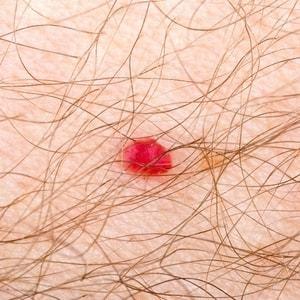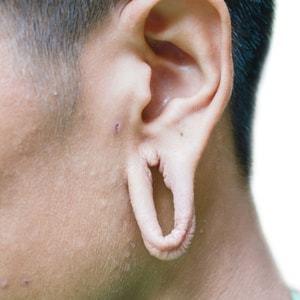Procedures and Conditions
Moles
Occur when cells in the skin grow in a cluster instead of being spread throughout the skin. These cells are called melanocytes, and they make the pigment that gives skin its natural color. Moles may darken after exposure to the sun, during the teen years, and during pregnancy. Procedure options Complete removal by surgical excision with suturing of the surrounding normal skin together Debulking (removing a portion, but not all of it).
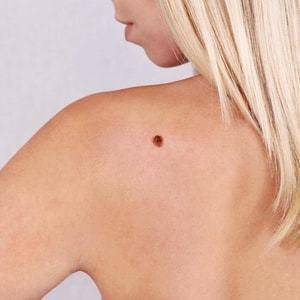
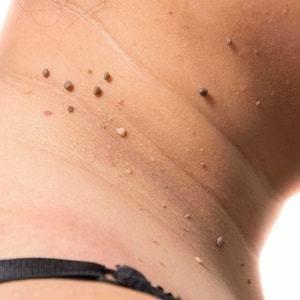
Skin Tags
A skin tag is a small, soft, flesh-colored skin growth that is usually benign (not cancer). They are among the most common bumps on adult skin. Skin tags are harmless but can be an annoying, itchy problem that interferes with clothing, jewelry. They tend to occur on the eyelids, neck, armpits, groin folds, under the breasts or elsewhere. Procedure options Freezing using very cold liquid (cryotherapy) Sharp blade excision.
Keratosis
One of the most common non-cancerous growths on the skin, keratosis appears as a brown, black, or light tan growth found on the back, shoulders, face, or chest. It may also appear scaly or waxy, and at times, slightly elevated. It is important for a medical provider to assess keratoses because they may look similar to moles with the potential for being skin cancer. Procedure options Shave excision Chemical or heat cautery Freezing using very cold liquid (cryotherapy) Curettage, or scraping the surface of the skin with a specialized instrument.
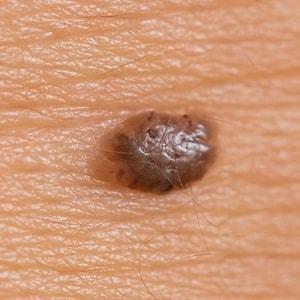
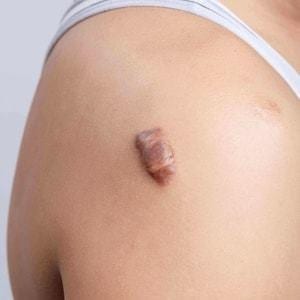
Keloid
A type of raised scar, they occur where the skin has healed after an injury. They can be firm pink to red in colour. They can grow to be much larger than the original injury that caused the scar. They tend to occur on shoulders, ears, chest and back. Anything that can cause a scar can cause a keloid. This includes being burned, cut, or having severe acne (also known as scarring acne). People with darker skin tones or people of certain ethnicities (African, Asian descent etc..) are at higher risk of developing keloids. Procedure options Complete removal of the keloid by surgical excision and suturing the surrounding skin together Applying a sheet of silicone on the affected area for several months Steroid injections to reduce the size slowly over several months time.
Lipoma
A growth made of fat tissue. They are generally soft to the touch, movable, and painless. They usually occur just under the skin, but occasionally may be deeper. Lipomas are generally not cancerous but sometimes are cancerous. It is important for a qualified professional to examine lipomas to ensure your safety. Procedure options Complete removal by surgical excision with repair of the overlying skin.
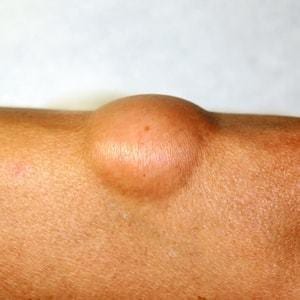
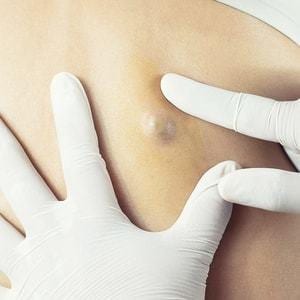
Cyst
These non-cancerous, closed pockets of tissue are usually filled with build-ups of pus, fluid, or other materials. They can appear virtually anywhere on the surface of the skin, developing due to infections, clogged oil glands, or foreign bodies, such as body piercings. Procedure options Complete removal by surgical excision with repair of the overlying skin using sutures Drainage by needle aspiration.
Growth
Growths may be raised or flat and range in color from dark brown or black to skin-colored to red. They may be present at birth or develop later. When the growth is controlled and the cells do not spread to other parts of the body, the skin growth (tumor) is noncancerous (benign). The doctor can make an accurate diagnosis during your visit. Procedure options Consult with the doctor to determine your best option.
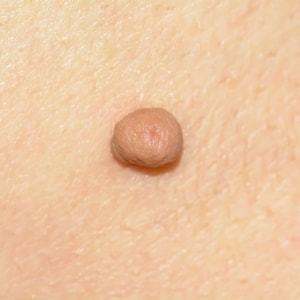
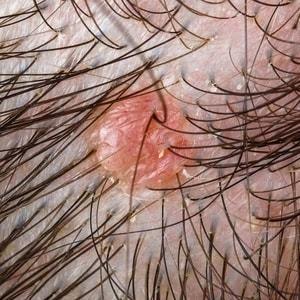
Nodules
A category of skin growths, Nodules can develop just below the skin. They can also develop in deeper skin tissues or internal organs. People can mistake other conditions for nodules, such as small cysts, boils, and abscesses. There are many types of nodules so it important that they are examined to ensure non-cancerous Procedure options Complete removal by surgical excision with repair of the overlying skin using sutures Oral antibiotics, if needed Drainage via needle aspiration.
Wart
A small growth with a rough texture that can appear anywhere on the body, common body parts include the hands, feet and genitals. They appear as a solid blister or a small cauliflower. Warts are caused by viruses in the human papillomavirus (HPV) family. Warts can spread to other areas of the skin but this can be prevented with treatment. Some wart treatments are free with valid OHIP coverage. Procedure options Prescription cream, applied regularly over several months Freezing using very cold liquid (cryotherapy) Shave excision Punch biopsy excision.
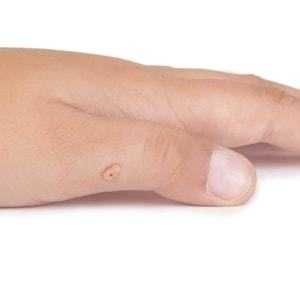
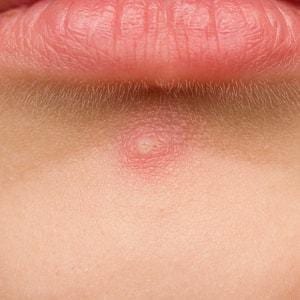
Painful Pimple
Pimples develop on the surface of the skin due to inflammation in the pores. The pore becomes inflamed as a result of bacteria, oil, and dead skin cells building up. To combat this, the body releases white blood cells, and the resulting inflammation creates a pimple. Pimples become painful when they occur in pores close to a nerve. Procedure options Acne Extraction: Sterile instruments to remove them Incision and Drainage: Involves a sterile needle and surgical blade to perform a small incision to open the blemish and drain the build up Steroid injection: A medication that can be injected to reduce risk of scarring and speed up healing.
Wart
